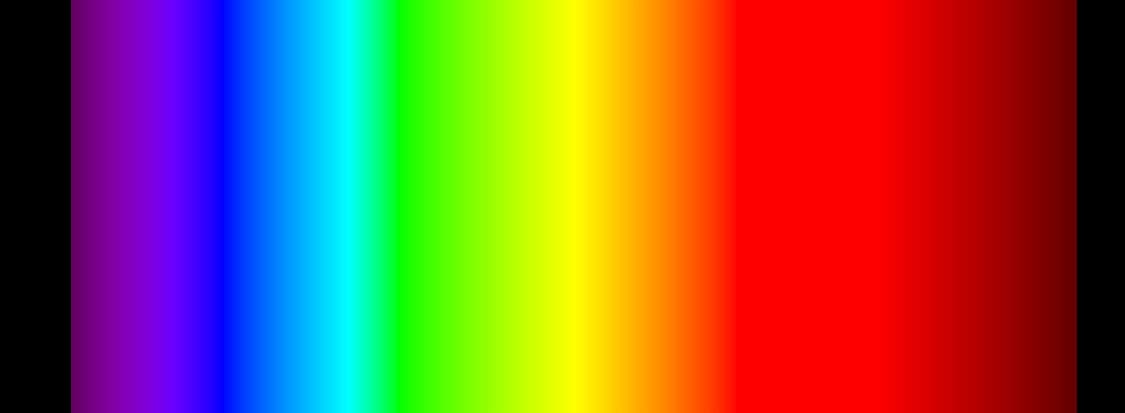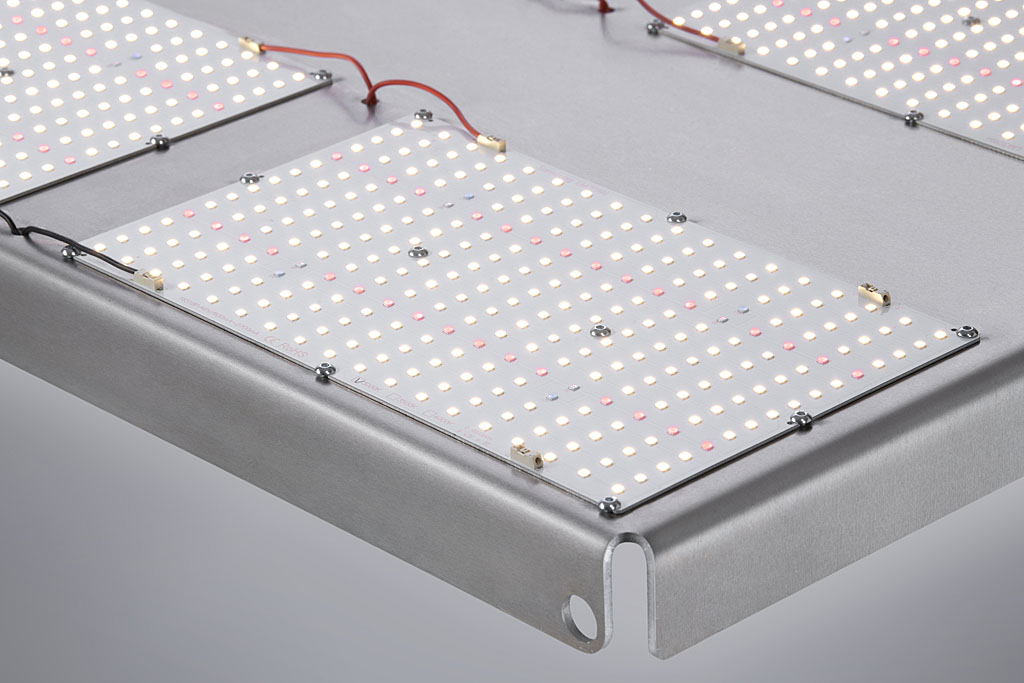Light / LED
Application areas
Light spectrum
The fact that photosynthesis is mainly responsible for plant growth has been known for a long time. However, we have only known about the exact influence of light intensity and light colour on plant growth for a few years.
Many manufacturers use a spectrum that consists mainly of blue and red LEDs. This mixture produces a purple coloured light. This misconception stems from the first experiments with cultivating plants with LEDs, using blue in the 430nm-450nm range and red in the 640nm-680nm range.
This combination results in a pink or violet light colour. While it is possible to successfully indoor horticulture with this spectrum, in this spectral field the plant lacks critical factors for healthy growth, flower initiation, healthy internode spacing and overall end product quality.
Diese Kombination ergibt eine pinke oder violette Lichtfarbe. Es ist zwar möglich mit diesem Spektrum erfolgreiche Indoor-Hortikultur zu betreiben, jedoch fehlen der Pflanze in diesem Spektrum Bereiche, welche entscheiden für ein gesundes Wachstum, die Einleitung der Blüte, einen gesunden Internodien Abstand und eine generelle Qualität des Endprodukts sind.
Viele Hersteller verwenden ein Spektrum das zum Großteil aus blauen und roten LEDs besteht. Diese Mischung erzeugt ein lila farbiges Licht. Dieser Irrglaube rührt von den ersten Experimenten Pflanzen mit LED zu kultivieren dabei wurden blaue im Bereich 430nm-450nm und rote im Bereich von 640nm bis 680 nm eingesetzt.


Ultraviolet light (10nm-400nm)
Although UV light has a negative effect on living organisms, a small amount of UV light is important for the development of flavour, aroma and pigments in plants.
Blue light (430nm-450nm)
Sufficient levels of blue can prevent excessive internode spacing and abnormal growth during the vegetative phase. Blue light (430nm-450nm) this light is crucial for the formation of chlorophyll, photosynthesis and the movement of chloroplasts.


Green light (500nm-550nm)
It has long been believed that green light has no effect on plants. However, studies show that this bandwidth is crucial for deep light penetration as it is not absorbed but reflected deeper into the leaf structure.
Red light (640nm-680nm)
This spectrum is the most important for photosynthesis and hormone regulation in plants. It also serves as a wake-up signal and is thus crucial for the initiation of flowering.


Deep red light (730nm)
Deep red does not in itself produce photosynthetic output. A sufficient level of deep red can prevent unnecessary stretch. In addition, a higher level near the end of the illumination period produces a regulation of hormones and thus a faster initiation of the sleep phase. Using a deep red spectrum can save up to 1.5 weeks in flowering time.
Spectrum Control
Spectrum control allows each user to choose a spectrum that best suits their desired characteristics. For example, 3500k is a universal spectrum, but more fixed on the vegetative phase compared to 3000k. Both spectra can be used from start to finish. A lamp with 2700k contains more red light and is therefore only recommended for flowering and comes closest to the light of conventional NDL lamps. 4000k and 6500k are only recommended for the vegetative phase, especially in the early vegetative phase the higher blue component is crucial to ensure optimal growth.
There are many factors that go into choosing the right spectrum, we at ELECxellent GmbH are happy to help you choose the right spectrum.
